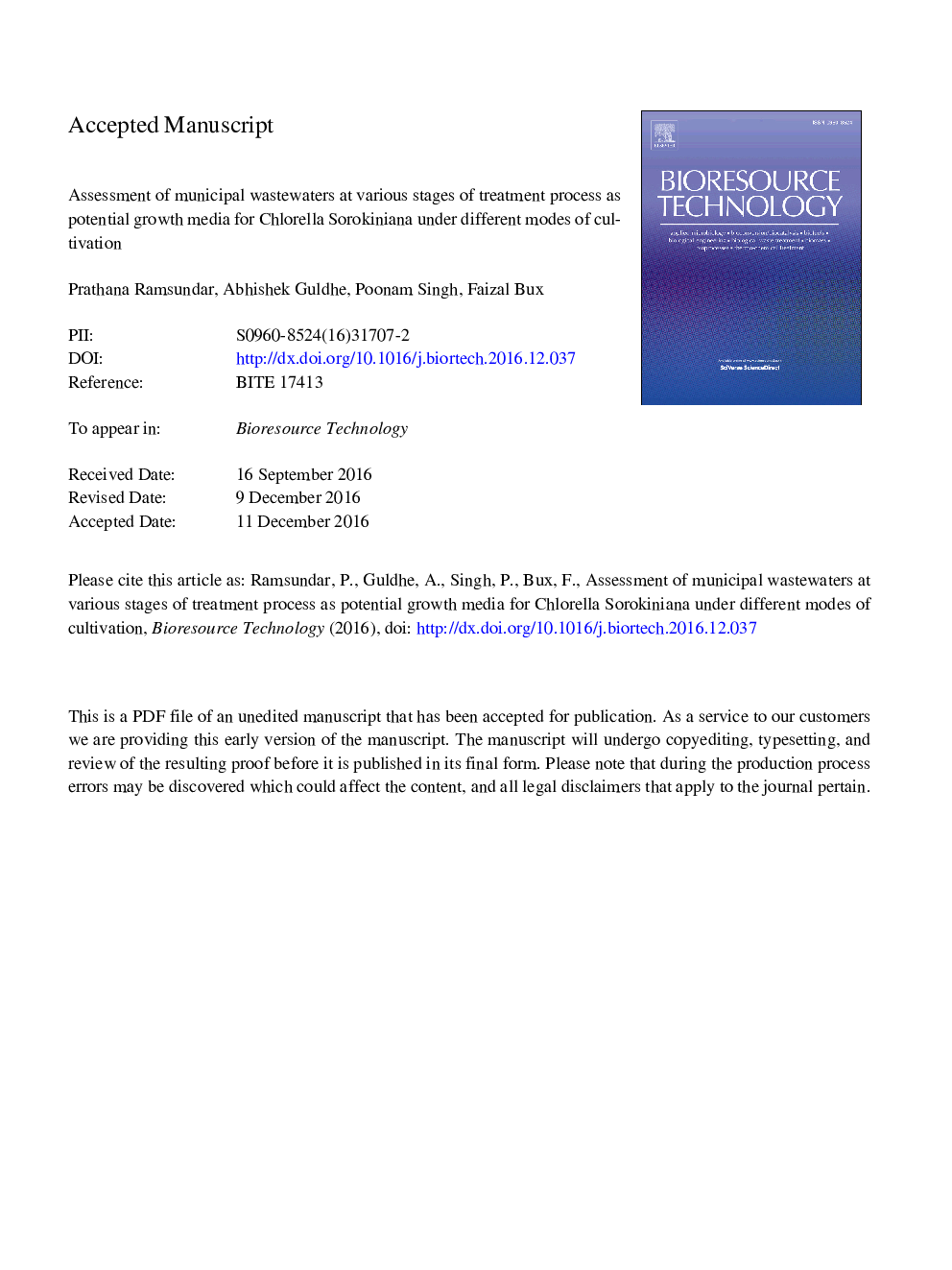| Article ID | Journal | Published Year | Pages | File Type |
|---|---|---|---|---|
| 4997673 | Bioresource Technology | 2017 | 43 Pages |
Abstract
Wastewater utilization for microalgal biomass production is potentially the most economical route for its fuel and feed applications. In this study, suitability of various wastewater streams within a domestic wastewater treatment plant was evaluated for microalgal cultivation. Pre-treatment methods were evaluated to minimize bacterial load. Biomass, cell physiology, nutrient removal efficiencies and biochemical constituents of Chlorella sorokiniana were investigated in influent (INF) and anaerobic tank centrate (AC) under mixotrophic (Mixo) and heterotrophic (Hetero) cultivation. Promising biomass (77.14 mg Lâ1 dâ1), lipid (24.91 mg Lâ1 dâ1), protein (22.36 mg Lâ1 dâ1) and carbohydrate (20.10 mg Lâ1 dâ1) productivities were observed in Mixo AC with efficient ammonium (94.29%) and phosphate (83.30%) removal. Supplementation of urea at a concentration of 1500 mg Lâ1 further enhanced biomass (162.50 mg Lâ1 dâ1), lipid (24.91 mg Lâ1 dâ1), protein (22.36 mg Lâ1 dâ1) and carbohydrate (20.10 mg Lâ1 dâ1) productivities in Mixo AC. Urea supplemented mixotrophic cultivation of microalgae in AC is developed as a biomass production strategy.
Related Topics
Physical Sciences and Engineering
Chemical Engineering
Process Chemistry and Technology
Authors
Prathana Ramsundar, Abhishek Guldhe, Poonam Singh, Faizal Bux,
